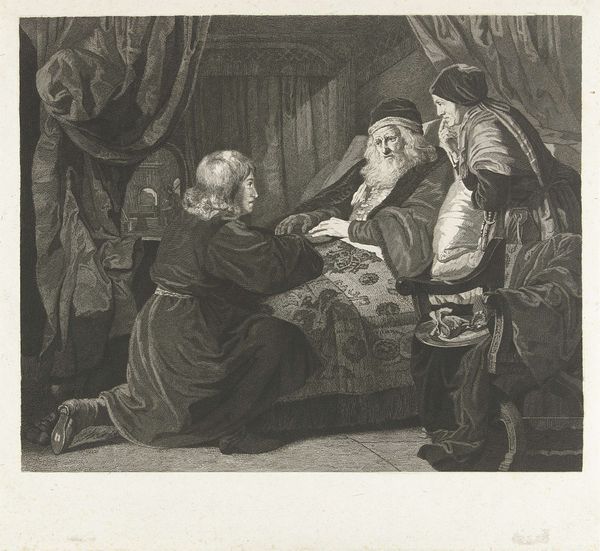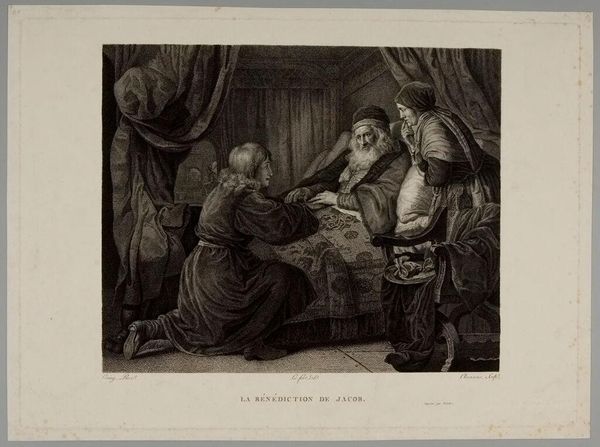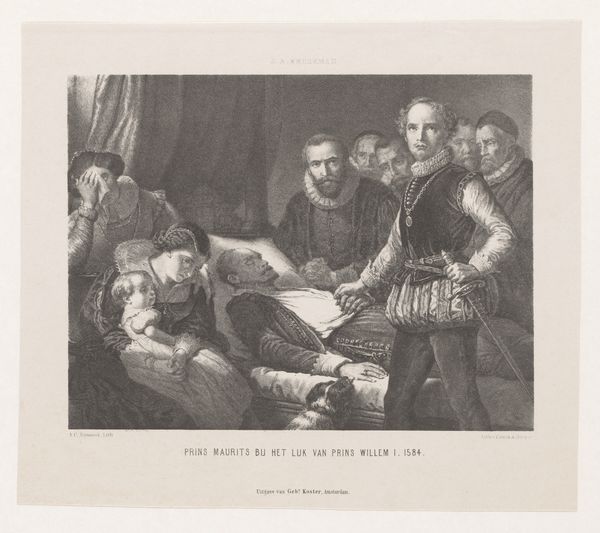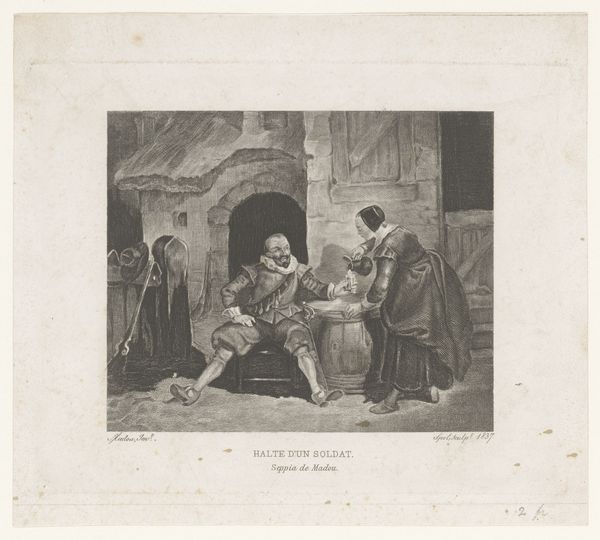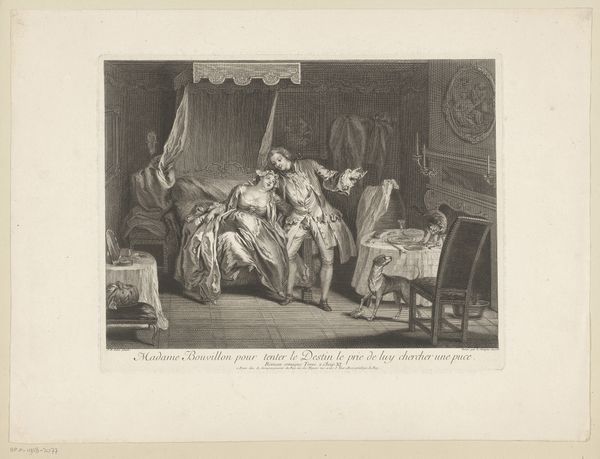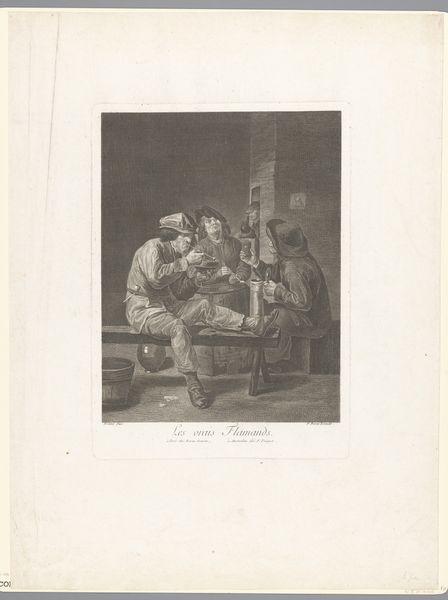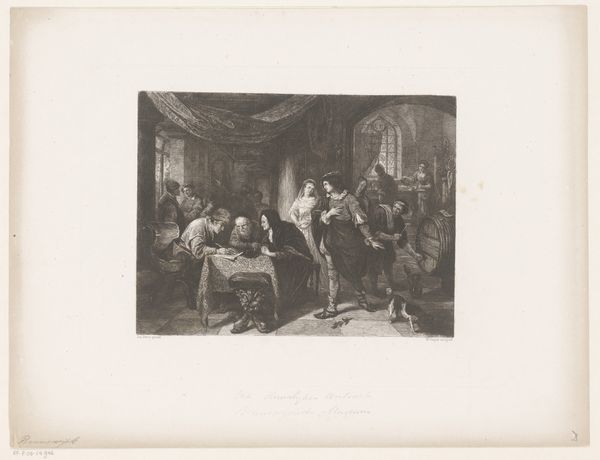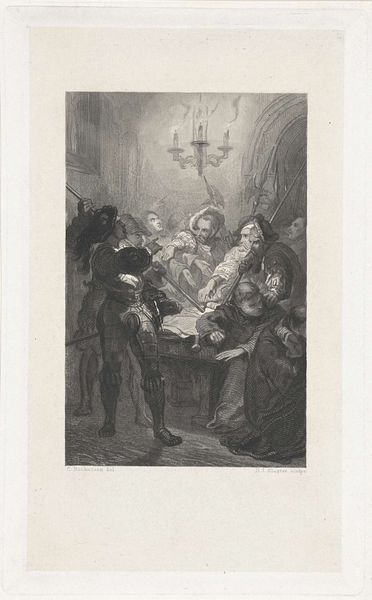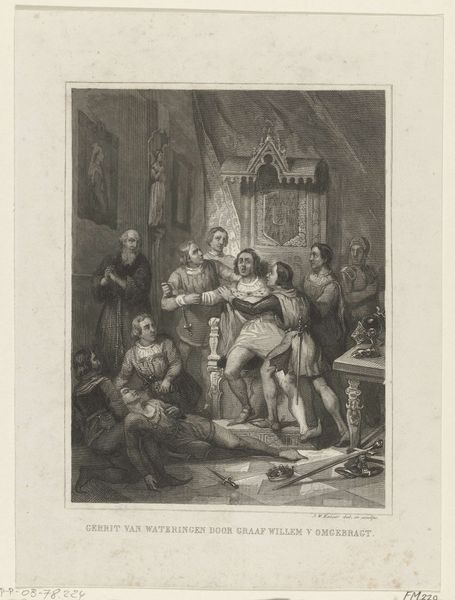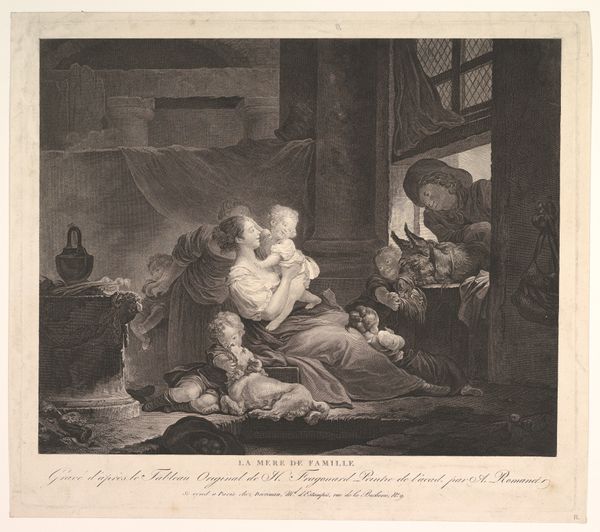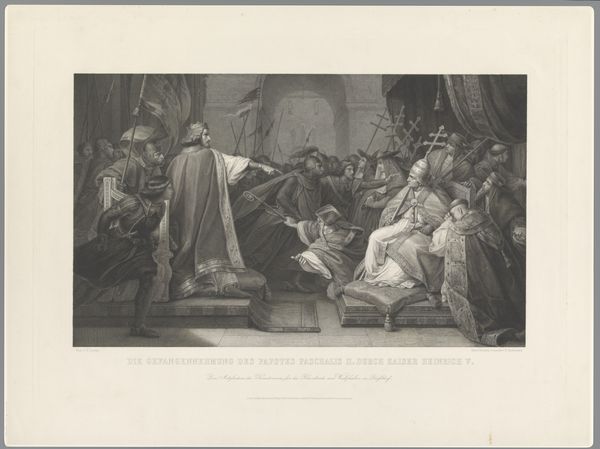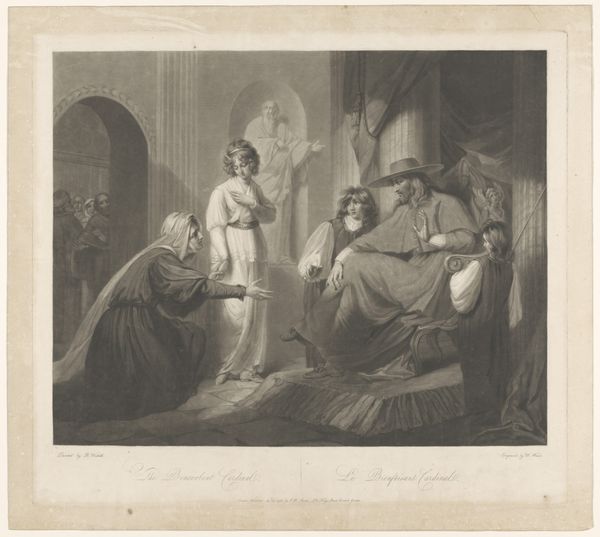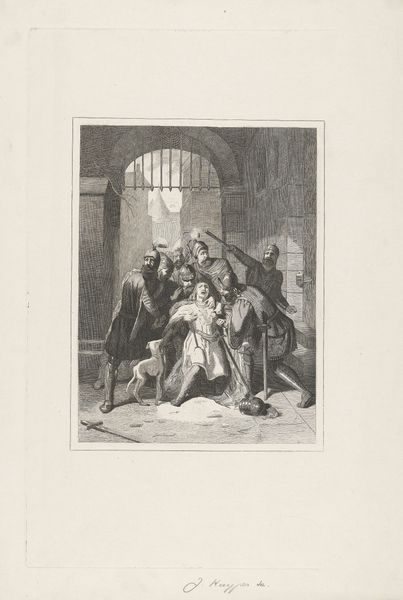
drawing, print, engraving
#
drawing
#
narrative-art
# print
#
history-painting
#
academic-art
#
engraving
Dimensions: height 310 mm, width 430 mm
Copyright: Rijks Museum: Open Domain
Curator: Here we have Lambertus Antonius Claessens' engraving "Isaak zegent Jakob", or "Isaac Blessing Jacob" as we might say, made sometime between 1809 and 1818. My immediate impression is the intense darkness contrasted with highlights that almost seem to glow. Editor: The chiaroscuro is incredibly dramatic! The dim interior makes the figures seem even more pivotal, doesn’t it? And it brings the whole notion of blessing versus deception, which is the core theme here, to the foreground, doesn’t it? It feels staged, but in a very compelling way. Curator: Absolutely, the strategic use of light and shadow heightens the narrative. Remember, engravings like this served a vital public role in disseminating imagery, acting almost as a visual news source or moral lesson. History paintings such as this would have served to affirm religious and ethical structures of that era. Editor: And this moment—Jacob deceiving his blind father, Isaac, to steal the blessing meant for Esau—is such a charged one. Looking through a modern lens, we have to recognize the complexities of this story: issues of family, legacy, divine right and, bluntly, patriarchal power are on display. How do we navigate that from the modern context? Curator: The Academic style further entrenches these established themes, right? There's a classicizing effect to it that lends the narrative a sense of authority. The piece adheres to well-defined composition, figural arrangements, and an emphasis on clear, legible gestures. It’s less about spontaneity and more about the enduring influence and the lessons within religious scripture. Editor: I see that enduring influence, but it also compels me to deconstruct that narrative. The way the composition directs our eyes to Isaac’s hands laid upon Jacob—it centers a fraudulent claim! By showing this scene so reverentially, the artist demands the viewers consider the impact this single moment will have across generations. Does it justify the ends, here? Is legacy more important than the process by which you obtain it? It really speaks to so many social power imbalances we see to this day! Curator: A worthwhile perspective to be sure. In its time, this piece could have offered an ideal, a reference to moral values within a firmly established, and quite different, societal framework. What resonates with you most as we leave this piece, then? Editor: Its boldness, paradoxically, as a critical tool. It makes me examine power structures. And you? Curator: I am left reflecting on art’s ability to influence and reinforce norms in the 19th century.
Comments
No comments
Be the first to comment and join the conversation on the ultimate creative platform.
